ad_1]
The Rise of Mechatronics in Drone Technology: A Symbiotic Evolution
Abstract: Drone technology has experienced exponential growth in recent years, transforming industries ranging from agriculture and construction to logistics and entertainment. This proliferation is intrinsically linked to the advancement and integration of mechatronics, a multidisciplinary field that synergistically combines mechanical, electrical, computer, and control engineering. This article explores the crucial role of mechatronics in shaping the modern drone landscape, analyzing its contributions to key drone subsystems such as propulsion, navigation, sensing, and control. It also examines the challenges and future trends in mechatronics-driven drone development, highlighting the potential for even more sophisticated and versatile applications in the years to come.
Keywords: Mechatronics, Drone Technology, Unmanned Aerial Vehicle (UAV), Propulsion, Navigation, Sensing, Control Systems, Robotics, Internet of Things (IoT), Artificial Intelligence (AI).
1. Introduction: The Dawn of the Drone Age
Unmanned Aerial Vehicles (UAVs), commonly known as drones, have transitioned from military applications to a ubiquitous presence in civilian life. These aerial robots are no longer confined to the realm of science fiction; they are actively employed across a diverse range of sectors, revolutionizing traditional practices and creating entirely new possibilities. [mfn 1] The applications are seemingly limitless, encompassing aerial photography, infrastructure inspection, precision agriculture, package delivery, search and rescue operations, and even scientific research in remote and hazardous environments. [mfn 2]
This rapid proliferation of drone technology is not solely attributed to advancements in a single discipline. Rather, it is the result of a synergistic convergence of multiple engineering fields, most notably mechatronics. Mechatronics, a term coined in the 1960s by Tetsuro Mori at Yaskawa Electric Corporation, embodies the holistic integration of mechanical engineering, electrical engineering, computer engineering, and control engineering. [mfn 3] It focuses on the design and development of intelligent systems that seamlessly blend physical components with sophisticated electronic and software control.
In the context of drone technology, mechatronics serves as the central nervous system, orchestrating the complex interplay of various subsystems to achieve stable flight, precise maneuvering, and intelligent decision-making. Without the principles of mechatronics, drones would be relegated to rudimentary, unstable platforms with limited functionality. This article delves into the crucial role of mechatronics in driving the evolution of drone technology, exploring its contributions to key drone subsystems and analyzing the challenges and future trends shaping this dynamic field.
2. The Mechatronic Architecture of Drones: A System-Level Overview
A modern drone is a sophisticated mechatronic system, composed of interconnected subsystems working in concert to achieve a desired mission. Understanding the mechatronic architecture is crucial to appreciating the profound impact this engineering discipline has had on drone capabilities. The primary subsystems, each heavily reliant on mechatronic principles, include:
- Propulsion System: This subsystem is responsible for generating the thrust required for lift and maneuvering. It typically consists of electric motors, propellers (or rotors), and electronic speed controllers (ESCs).
- Navigation System: The navigation system enables the drone to autonomously determine its position, orientation, and velocity in space. This involves a complex interplay of sensors, including GPS receivers, inertial measurement units (IMUs), barometers, and magnetometers, coupled with sophisticated sensor fusion algorithms.
- Sensing System: Beyond navigation, the sensing system provides the drone with a comprehensive understanding of its environment. This can include cameras (RGB, thermal, multispectral), LiDAR scanners, ultrasonic sensors, and other specialized sensors depending on the specific application.
- Control System: The control system acts as the “brain” of the drone, processing sensor data, executing control algorithms, and actuating the propulsion system to achieve desired flight paths and maintain stability. It relies on a central processing unit (CPU) or microcontroller, along with software and algorithms for flight control, path planning, and obstacle avoidance.
- Power System: The power system provides the necessary electrical energy to all other subsystems. Typically, this consists of a rechargeable lithium polymer (LiPo) battery and power management circuitry.
- Communication System: This system facilitates communication between the drone and a ground control station or other devices. It usually involves radio transceivers and communication protocols for transmitting telemetry data, receiving commands, and streaming video.
These subsystems are not isolated entities; they are intricately interconnected and rely on seamless communication and data exchange. The control system, in particular, acts as the central hub, integrating data from the navigation and sensing systems to generate control commands for the propulsion system. This closed-loop feedback control is a cornerstone of mechatronic design and is essential for achieving stable and autonomous flight.
3. Mechatronics in Drone Propulsion: Efficiency and Agility
The propulsion system is arguably the most critical subsystem for drone operation. It directly impacts the drone’s flight time, payload capacity, maneuverability, and overall performance. Mechatronics plays a pivotal role in optimizing the design and control of drone propulsion systems.
-
Electric Motors: Brushless DC (BLDC) motors are the dominant choice for drone propulsion due to their high efficiency, power density, and reliability compared to traditional brushed motors. [mfn 4] Mechatronics is involved in the design of BLDC motors, focusing on optimizing magnetic circuit design, winding configurations, and rotor balancing to maximize efficiency and minimize vibrations. Furthermore, advanced motor control algorithms, implemented through microcontrollers, are essential for achieving precise speed and torque control, enabling smooth and responsive maneuvering.
-
Electronic Speed Controllers (ESCs): ESCs are responsible for controlling the speed of the BLDC motors. They receive commands from the flight controller and regulate the voltage and current supplied to the motor windings, effectively controlling the motor’s rotational speed. Modern ESCs are sophisticated mechatronic devices that employ pulse-width modulation (PWM) techniques to precisely control the motor speed. [mfn 5] They also often incorporate features such as regenerative braking, which recovers energy during deceleration, further improving efficiency. Advanced ESCs are capable of communicating with the flight controller via digital protocols, allowing for real-time monitoring of motor performance and adjustment of control parameters.
-
Propellers (or Rotors): The aerodynamic design of propellers is crucial for generating efficient thrust. Mechatronics principles are applied in the design and analysis of propeller blade profiles, considering factors such as airfoil shape, pitch angle, and blade length to optimize lift-to-drag ratio and minimize noise. [mfn 6] Furthermore, research is ongoing in the development of variable-pitch propellers, which can dynamically adjust their pitch angle to optimize thrust and efficiency across a wider range of flight conditions. These variable-pitch propellers require sophisticated mechatronic actuators and control systems.
-
Thrust Vectoring: For enhanced maneuverability, some advanced drone designs incorporate thrust vectoring capabilities. This involves tilting the propellers or nozzles to redirect the thrust generated by the propulsion system, allowing for agile maneuvering and even unconventional flight modes such as hovering in strong winds. Thrust vectoring systems rely heavily on mechatronic actuators and precise control algorithms to ensure accurate and responsive thrust redirection.
4. Navigation and Localization: Mechatronics for Autonomous Flight
Autonomous navigation is a key enabler for many drone applications. Mechatronics is central to developing robust and reliable navigation systems that allow drones to accurately determine their position, orientation, and velocity in space.
-
Global Positioning System (GPS): GPS receivers provide drones with absolute position information based on signals from orbiting satellites. However, GPS signals can be unreliable in urban canyons, indoors, or other environments where signal blockage is prevalent. Mechatronic systems integrate GPS data with other sensor data to improve navigation accuracy and robustness.
-
Inertial Measurement Units (IMUs): IMUs consist of accelerometers and gyroscopes that measure linear acceleration and angular rate, respectively. IMUs provide high-frequency, short-term attitude and position information, which is essential for maintaining stability and controlling the drone’s orientation. However, IMUs suffer from drift, which means that their accuracy degrades over time. Mechatronics plays a crucial role in developing sophisticated sensor fusion algorithms that combine IMU data with GPS data and other sensor data to compensate for drift and achieve accurate long-term navigation.
-
Barometers: Barometers measure atmospheric pressure, providing information about the drone’s altitude. Barometric altitude measurements can be used to supplement GPS altitude data and improve overall navigation accuracy.
-
Magnetometers: Magnetometers measure the Earth’s magnetic field, providing information about the drone’s heading. Magnetometers can be used to compensate for gyroscope drift and improve heading accuracy. However, magnetometers are susceptible to interference from nearby magnetic fields, so they must be carefully calibrated and compensated for.
-
Sensor Fusion: The key to accurate and robust navigation lies in sensor fusion, which involves combining data from multiple sensors to obtain a more accurate and reliable estimate of the drone’s state. Sensor fusion algorithms, such as Kalman filters and extended Kalman filters, are sophisticated mathematical tools that optimally combine sensor data based on their respective noise characteristics and uncertainties. Mechatronics engineers are responsible for designing and implementing these sensor fusion algorithms, ensuring that the navigation system provides accurate and reliable information even in challenging environments.
-
Simultaneous Localization and Mapping (SLAM): SLAM is a technique that allows a drone to simultaneously build a map of its environment and localize itself within that map. SLAM algorithms typically use data from cameras, LiDAR scanners, or other sensors to create a 3D representation of the environment. Mechatronic systems integrate SLAM algorithms with control systems to enable autonomous navigation in unknown environments. SLAM is particularly useful in environments where GPS is unavailable or unreliable, such as indoors or in dense urban areas.
5. Sensing and Perception: Expanding the Drone’s Awareness
Drones are increasingly equipped with a diverse array of sensors that enable them to perceive their environment in detail. Mechatronics is instrumental in integrating these sensors and developing intelligent algorithms to extract meaningful information from the sensor data.
-
RGB Cameras: RGB cameras capture standard color images, providing visual information about the drone’s surroundings. Mechatronics is involved in designing camera gimbals that stabilize the camera and allow it to be pointed in different directions. Furthermore, computer vision algorithms are used to analyze the camera images, enabling the drone to identify objects, detect obstacles, and track targets.
-
Thermal Cameras: Thermal cameras capture infrared radiation, providing information about the temperature of objects in the drone’s surroundings. Thermal cameras are used in applications such as search and rescue, firefighting, and infrastructure inspection to detect heat signatures that are not visible to the naked eye.
-
Multispectral Cameras: Multispectral cameras capture images in multiple narrow spectral bands, providing information about the reflectance properties of objects in the drone’s surroundings. Multispectral cameras are used in precision agriculture to assess crop health and identify areas that require irrigation or fertilization.
-
LiDAR Scanners: LiDAR scanners emit laser pulses and measure the time it takes for the pulses to return, providing accurate 3D point clouds of the drone’s surroundings. LiDAR scanners are used in applications such as surveying, mapping, and autonomous navigation.
-
Ultrasonic Sensors: Ultrasonic sensors emit sound waves and measure the time it takes for the waves to return, providing information about the distance to nearby objects. Ultrasonic sensors are used in applications such as obstacle avoidance and altitude control.
-
Object Recognition and Image Processing: The raw data from these sensors is often processed using sophisticated algorithms to extract meaningful information. Object recognition algorithms can identify specific objects in the drone’s surroundings, such as people, cars, or buildings. Image processing techniques can be used to enhance images, remove noise, and extract features that are relevant to the drone’s mission. Mechatronics engineers are involved in developing and implementing these algorithms, ensuring that the drone can effectively interpret the data from its sensors and make informed decisions.
6. Control Systems: The Brains of the Drone
The control system is the central processing unit that orchestrates all of the drone’s actions. It receives data from the navigation and sensing systems, executes control algorithms, and actuates the propulsion system to achieve desired flight paths and maintain stability. Mechatronics is essential for designing robust and reliable control systems that can handle the complex dynamics of drone flight.
-
Flight Controllers: Flight controllers are specialized microcontrollers that are designed to control the flight of drones. They typically contain a powerful processor, a variety of sensors (including IMUs and barometers), and a set of motor outputs. Flight controllers run sophisticated flight control algorithms that stabilize the drone and allow it to be controlled by a human operator or to fly autonomously.
-
Control Algorithms: A variety of control algorithms are used in drone flight control systems, including proportional-integral-derivative (PID) control, model predictive control (MPC), and adaptive control. PID control is a simple and widely used control algorithm that adjusts the motor outputs based on the error between the desired state and the actual state. MPC is a more advanced control algorithm that predicts the future behavior of the drone and optimizes the control inputs to achieve a desired trajectory. Adaptive control algorithms can adjust their parameters online to compensate for changes in the drone’s dynamics or environment.
-
Path Planning and Obstacle Avoidance: For autonomous flight, drones need to be able to plan their own paths and avoid obstacles. Path planning algorithms generate a sequence of waypoints that the drone should follow to reach its destination. Obstacle avoidance algorithms use data from sensors to detect obstacles and adjust the drone’s path to avoid collisions. Mechatronics engineers are involved in developing and implementing these algorithms, ensuring that the drone can navigate safely and efficiently in complex environments.
-
Human-Machine Interface (HMI): The HMI is the interface through which humans interact with the drone. This can include a remote control, a ground control station, or a mobile app. The HMI allows the operator to control the drone’s flight, monitor its status, and receive feedback from the drone. Mechatronics engineers are involved in designing the HMI, ensuring that it is intuitive, easy to use, and provides the operator with all the information they need to safely and effectively control the drone.
7. Challenges and Future Trends in Mechatronics-Driven Drone Development
While mechatronics has significantly advanced drone technology, several challenges remain, and future trends promise even more transformative advancements.
-
Power Efficiency and Flight Time: Extending flight time remains a critical challenge. Mechatronics is crucial in developing more efficient electric motors, ESCs, and propellers. Research into alternative power sources, such as hydrogen fuel cells and solar cells, is also ongoing. Furthermore, optimizing flight control algorithms to minimize energy consumption is an active area of research.
-
Autonomous Navigation in Complex Environments: Navigating autonomously in complex environments, such as crowded urban areas or dense forests, is still a significant challenge. Mechatronics is essential for developing more robust and reliable sensor fusion algorithms, SLAM algorithms, and obstacle avoidance algorithms. Furthermore, research into artificial intelligence (AI) and machine learning (ML) is enabling drones to learn from their experiences and adapt to new environments.
-
Swarm Robotics: Swarm robotics involves controlling multiple drones to work together as a coordinated team. Swarm robotics has the potential to revolutionize many applications, such as search and rescue, agriculture, and construction. Mechatronics is essential for developing the communication protocols, control algorithms, and sensor systems that are needed to enable swarm robotics.
-
Miniaturization and Integration: There is a growing demand for smaller and more lightweight drones. Mechatronics is essential for miniaturizing drone components and integrating them into compact and efficient systems. This involves developing new microfabrication techniques, advanced materials, and innovative packaging strategies.
-
Enhanced Safety and Reliability: Ensuring the safety and reliability of drones is paramount. Mechatronics is crucial for developing fault-tolerant control systems, redundant sensor systems, and robust communication protocols. Furthermore, research into advanced diagnostic and prognostic techniques is enabling drones to detect and predict potential failures before they occur.
-
Artificial Intelligence and Machine Learning Integration: AI and ML are playing an increasingly important role in drone technology. AI algorithms can be used to automate tasks such as path planning, object recognition, and obstacle avoidance. ML algorithms can be used to learn from sensor data and improve the performance of control systems. Mechatronics engineers are working to integrate AI and ML algorithms into drone systems, enabling them to operate more autonomously and intelligently.
-
Internet of Things (IoT) Integration: Drones are becoming increasingly integrated with the IoT, enabling them to collect data from remote locations and transmit it to a central server for analysis. This data can be used for a variety of applications, such as environmental monitoring, infrastructure inspection, and precision agriculture. Mechatronics is essential for developing the communication protocols, sensor systems, and data processing algorithms that are needed to enable IoT integration.
8. Conclusion: The Future is Mechatronic
The rise of drone technology is inextricably linked to the advancements and integration of mechatronics. This multidisciplinary field provides the essential foundation for the design, development, and control of sophisticated drone systems. From optimizing propulsion efficiency to enabling autonomous navigation and intelligent sensing, mechatronics has been instrumental in transforming drones from niche military applications to ubiquitous tools with diverse applications across numerous industries.
As drone technology continues to evolve, mechatronics will play an even more crucial role in addressing existing challenges and unlocking new possibilities. Future advancements in areas such as power efficiency, autonomous navigation, swarm robotics, and AI integration will be driven by innovative mechatronic solutions. The symbiotic relationship between mechatronics and drone technology will continue to shape the future of aerial robotics, leading to even more versatile, intelligent, and impactful applications in the years to come. The future of drones is undoubtedly mechatronic.
References:
[mfn 1] Floreano, D., & Wood, R. J. (2015). Science, technology and the future of small autonomous drones. Nature, 521(7553), 460-466. [mfn 2] Erdelj, M., Natalizio, E., Chowdhury, K. R., & Petrova, M. (2017). Help from the sky: Leveraging UAVs for disaster management. IEEE Pervasive Computing, 16(1), 24-32. [mfn 3] Buur, J., & Soskice, J. (2008). Mechatronics design: Integration through invention. Research in Engineering Design, 19(4), 213-225. [mfn 4] Gieras, J. F., Wing, M., & Hagstedt, A. J. (2008). Permanent magnet motor technology: Design and applications. CRC press. [mfn 5] Rashid, M. H. (2017). Power electronics: circuits, devices, and applications. Pearson Education. [mfn 6] Anderson Jr, J. D. (2016). Fundamentals of aerodynamics. McGraw-Hill Education.
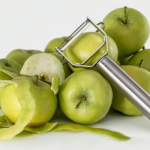













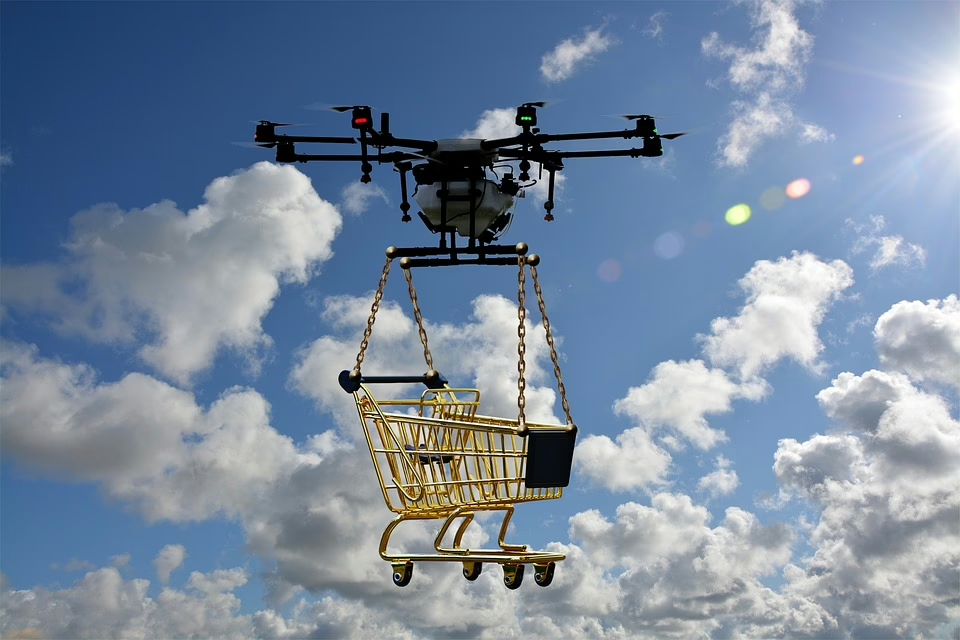

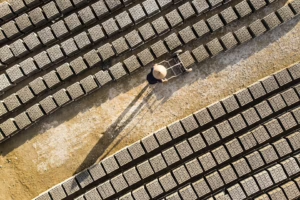
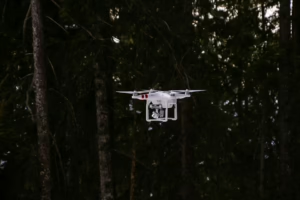

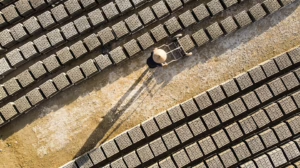
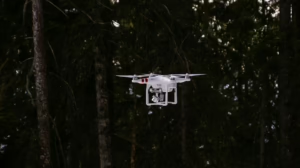




Add Comment